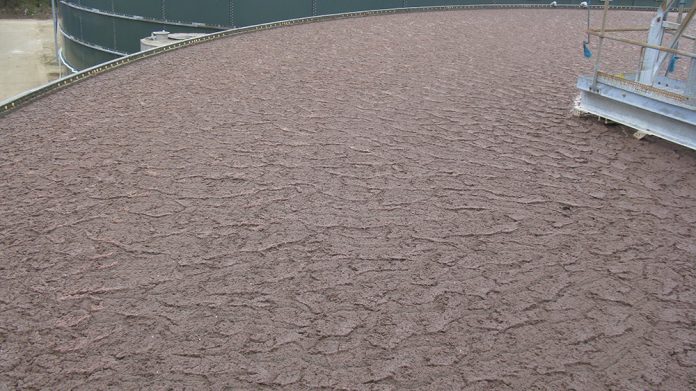Kevin Sheeran and Dr Mikael Khan, of environmental consultancy Aqua Enviro, examine the technology’s potential applications in wastewater and water.
Biological treatment is the bedrock of wastewater treatment globally.
Communities of bacteria facilitate sanitation, resource recovery and environmental compliance. These organisms would naturally play their part in the Nitrogen and Carbon cycles, but as we have harnessed their capabilities for wastewater treatment, their role in society and the circular economy has become critical.
The operation of wastewater treatment plants is monitored using physiochemical parameters such as COD, suspended solids, ammonia and phosphorus concentrations, which are all indirect metrics to monitor how the bacteria are performing.
The wastewater treatment processes rely on slow growing groups of microorganisms/bacteria such as Phosphorus Accumulating Organisms (PAOs), Nitrifiers, and Anammox. These populations of bacteria can be vulnerable to competition and toxic shock events, with the added detriment of having a slow recovery time.
Changes in the population tend to occur before any tangible or noticeable changes on site, such as filamentous bulking that can be detected by the traditional physiochemical parameters. Therefore, the need to increased monitoring of these populations could lead to further optimisation of assets to improve treatment and lower OPEX.
Metagenomics opens up the possibility to directly understand the bacterial populations and help answer questions such as:
1. Who is there?
2. What are they doing?
3. What is the population landscape?
By using the latest sequencing technologies, it is possible to monitor bacterial populations in near real time. This technology has been developing over the years, and is used already in a variety of industries such as oil & gas, pharmaceuticals, and food production. However, only now has it advanced to a point of general usability, reliability, robustness, speed of analysis and affordability.
The price of sequencing has declined year-on-year and is now at point where it is finally accessible to areas outside of research, thus opening up a multitude of commercial and large-scale deployment opportunities. While metagenomics can involve sequencing all the genes within a particular environment, a simpler and less intensive form is 16S sequencing. The general principle is to exploit the 16S rRNA gene as a unique marker for each genus or species within the sample.
This involves a typical DNA extraction step to separate the DNA from other cellular debris, followed by a library preparation which will amplify the extracted DNA, and more specifically, the target 16S rRNA gene. The library can then be sequenced to determine the individual DNA nitrogenous bases, A, T, G, or C and the order in which they are found. The sequence of the bases is compared to a database of known sequences for individual species and their corresponding 16S rRNA gene sequences. The relative abundances of each species present can then be determined by the frequency of the number of times its 16S rRNA gene was sequenced.
In the past, sequencing only a handful of genes – never mind an entire ecosystem – could take several days or weeks. Today, sequencing can be performed and completed in the same day with the latest sequencing platforms. To add to the advantageous nature of this new technology, it can also be used on site outside a traditional laboratory setting.
Leveraging the power of metagenomics and the wealth of information it provides opens up a multitude of applications for plant operational control and performance optimisation and enhancement.
Here we look at an example of its deployment for EBPR (Enhanced Biological Phosphorus Removal) applications. The information gained regarding the key species involved within nitrogen and phosphorus removal, and settlement characteristics, can lead to process optimisation in these areas through operational decisions in response to their changes.
For instance, creating a baseline for the population within a system and measuring the variation away from that baseline to pre-empt operational issues. A simplistic approach would be to monitor the populations before and after major changes, such as the conversion to an Enhanced biological phosphorus removal (EBPR) system. To go further would be to implement a continuous monitoring regime whereby, engineering and operational changes were implemented and the bacterial populations were monitored throughout these changes.
Adjustments to changes could then be made based on near real-time population data. Frequent monitoring of bacterial populations can help inform on the parameters such as pH, temperature and nutrients required at a specific treatment works, as well as pushing the populations towards a more optimised system with greater biological nutrient removal.
Sequencing could also be advantageous in pathogen detection and Antimicrobial resistance (AMR) monitoring. Wastewater-based epidemiology (WBE) has incorporated genetic techniques for decades to monitor Polio outbreaks and vaccination success in African countries, and are now being used to monitor SARS-Cov-2 outbreaks and track variants. The general idea is that the pathogen, or at least the genetic material from the pathogen, is shed from humans into sewers and eventually into wastewater treatment plants. While qPCR is being used to detect the virus as a whole in local catchment areas, sequencing can be used to determine mutations and variants of the virus. This can lead to greater on-the-ground surveillance, restrictions and therapeutic approaches.



